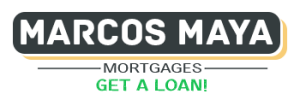
Everything You Need to Know About Private Mortgage Insurance (PMI)
If you're planning to buy a home with a down payment of less than 20%, you might have heard the term "Private Mortgage Insurance" or PMI. PMI is an insurance policy that protects lenders in case borrowers default on their mortgages. It's a mandatory requirement for conventional loans and can add to your monthly mortgage payment.
In this blog post, we'll go in-depth into what PMI is, how it works, and what you need to know as a homebuyer.
What is Private Mortgage Insurance (PMI)?
Private Mortgage Insurance (PMI) is a type of insurance that protects lenders in case borrowers default on their mortgages. It's typically required by lenders for borrowers who have a down payment of less than 20% when buying a home.
PMI is not a protection for the borrower, but instead a protection for the lender. If you default on your mortgage and the lender forecloses on your home, the PMI will cover a portion of the lender's loss. This insurance allows lenders to offer mortgages to borrowers who might not otherwise qualify due to a lower down payment.
How Does PMI Work?
PMI is usually paid as a monthly premium that's added to your mortgage payment. The cost of PMI varies depending on the size of your down payment, the size of the loan, and the level of risk associated with the borrower. On average, PMI costs around 0.5% to 1% of the total loan amount per year.
You'll typically pay PMI until your loan-to-value (LTV) ratio drops to 80% or less. LTV is the ratio of your loan amount to the value of your home. For example, if you buy a home for $300,000 and put down 10%, your loan amount is $270,000 and your LTV is 90%. Once your LTV drops to 80%, you can request to have your PMI removed.
However, if you have an FHA loan, you'll have to pay Mortgage Insurance Premiums (MIP) for the life of the loan.
Why Do You Need PMI?
PMI is a mandatory requirement for conventional loans with a down payment of less than 20%. The reason for this is that lenders consider borrowers with lower down payments to be higher risk. PMI protects lenders in case borrowers default on their mortgages, which means that they're more willing to offer mortgages to borrowers with lower down payments.
If you can't afford a 20% down payment, PMI can help you get approved for a mortgage. However, it's important to note that PMI adds to your monthly mortgage payment, which can make your home less affordable.
How to Get Rid of PMI
As we mentioned earlier, you can request to have your PMI removed once your LTV drops to 80% or less. However, some lenders may have additional requirements that you need to meet before they'll remove your PMI.
If you have an FHA loan, you'll have to pay MIP for the life of the loan. However, if you refinance to a conventional loan, you can get rid of PMI once your LTV drops to 80% or less.
Private Mortgage Insurance (PMI) is an insurance policy that protects lenders in case borrowers default on their mortgages. It's a mandatory requirement for conventional loans with a down payment of less than 20%. PMI adds to your monthly mortgage payment, but it can help you get approved for a mortgage if you can't afford a 20% down payment. Once your LTV drops to 80% or less, you can request to have your PMI removed.





Facebook Comments